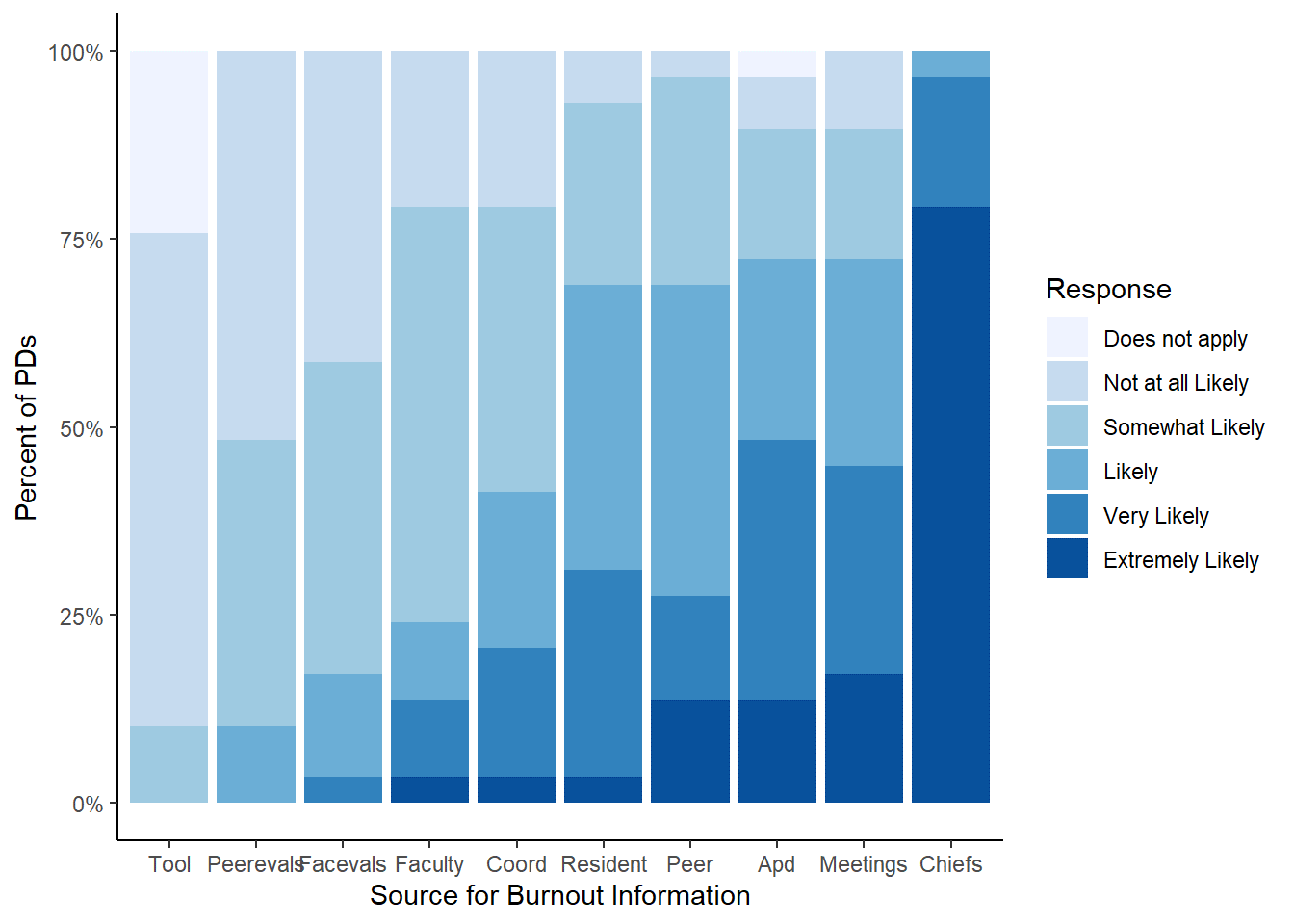Medical Education: Resident
Medical Education 10: Resident 3
547 - Should I Worry If I'm Worried? Program Director (PD) Accuracy with Predicting which of their Residents are Experiencing Burnout
Sunday, April 30, 2023
3:30 PM - 6:00 PM ET
Poster Number: 547
Publication Number: 547.324
Publication Number: 547.324
Ann E.. Burke, Wright State University Boonshoft SOM- Dayton, OH, Dayton, OH, United States; Su-Ting T. Li, University of California Davis, Sacramento, CA, United States; Betty B. Staples, Duke University School of Medicine, Durham, NC, United States; Eric Whitney, Dayton Children's Hospital, Beavercreek, OH, United States; Alan Schwartz, University of Illinois at Chicago, Chicago, IL, United States; Sabrina Ben-Zion, Akron Children's Hospital, Akron, OH, United States; John D. Mahan, John D Mahan, Professor of Pediatrics, Nationwide Children's/The Ohio State University, Columbus, OH, United States
- AB
Ann E. Burke, MD, MBA (she/her/hers)
Professor of Pediatrics, Vice Chair for Education
Wright State University Boonshoft SOM- Dayton, OH
Dayton, Ohio, United States
Presenting Author(s)
Background: Medical education literature provides evidence that burnout can negatively affect patient safety, as well as add to physician personal and professional problems. Residents may not feel comfortable alerting residency leaders when they are experiencing burnout. Identification of/concern for burnout in others would be helpful in the training setting.
Objective: Analyze relationship between PDs' identification of burnout in their trainees to trainees' self-assessments of burnout.
Design/Methods: Prospective cross-sectional study using data collected from the 2022 Pediatric Resident Burnout and Resilience Study Consortium survey which includes the Maslach two-item burnout scales. PDs that participated completed a survey with questions about program and personal characteristics, program leadership structure and mechanisms for finding out about residents who may be experiencing burnout. PDs then completed two questions about each of their residents using "concern for burnout" (from 1-not concerned at all to 5-extremely concerned) and "confidence about that concern" (from 1-not at all confident to 4-extremely confident). ROC curve analysis was used to analyze associations between actual individual resident burnout and PD concern. Multivariate regression aimed to identify program and PD characteristics that may increase the accuracy of their assessment (program size, leadership team size, length of time being a PD, etc).
Results: A total of 31 PDs and 880 total residents from those 31 programs participated. Most (59.3%) residents were experiencing burnout. If PDs were "concerned"(level 3) to "extremely concerned"(level 5) for burnout, that assessment was highly specific (specificity: 80.2%). For residents whose PDs were "extremely concerned", 83.3% (30/36) self-reported burnout. Our measure was less sensitive (Sensitivity: 35%), potentially due to the high prevalence of residents experiencing burnout in our study. The probability of burnout was above 0.75 when the PD was "concerned" to "extremely concerned" AND "confident" in that assessment. PDs were "extremely likely" (78%) to obtain information about trainees from chief residents (fig.). There was no identified PD nor program characteristics that demonstrated statistical significance with increased accuracy of burnout assessments in residents.
Conclusion(s): The majority of pediatric residents in this study were experiencing burnout. Their PDs had a high specificity of being accurate with their assessment of their residents' burnout if they were "concerned" or above. Most PDs find out about residents who are experiencing burnout from their chief residents.

